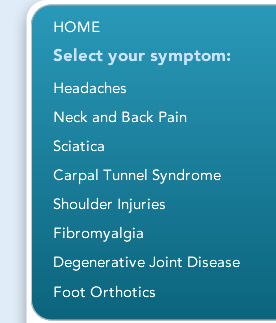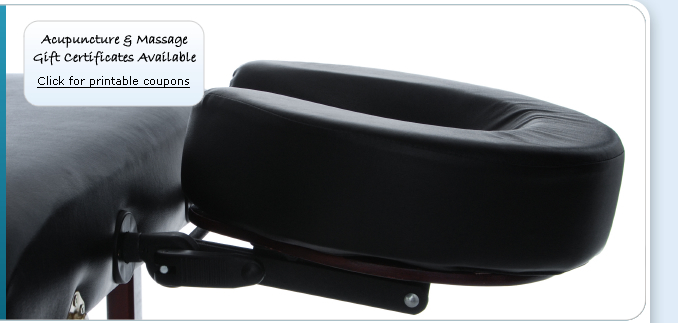172 Cambridge St. | Suite 304 | Burlington, MA 01803 | (781) 221-2295
What is Chiropractic?
Chiropractic is a health care profession that focuses on disorders of the musculoskeletal system and the nervous system, and the effects of these disorders on general health. Chiropractic care is used most often to treat neuromusculoskeletal complaints, including but not limited to back pain, neck pain, pain in the joints of the arms or legs, and headaches.
Doctors of Chiropractic - often referred to as chiropractors or chiropractic physicians - practice a drug-free, hands-on approach to health care that includes patient examination, diagnosis and treatment. Chiropractors have broad diagnostic skills and are also trained to recommend therapeutic and rehabilitative exercises, as well as to provide nutritional, dietary and lifestyle counseling.
The most common therapeutic procedure performed by doctors of chiropractic is known as "spinal manipulation," also called "chiropractic adjustment." The purpose of manipulation is to restore joint mobility by manually applying a controlled force into joints that have become hypomobile - or restricted in their movement - as a result of a tissue injury. Tissue injury can be caused by a single traumatic event, such as improper lifting of a heavy object, or through repetitive stresses, such as sitting in an awkward position with poor spinal posture for an extended period of time. In either case, injured tissues undergo physical and chemical changes that can cause inflammation, pain, and diminished function for the sufferer. Manipulation, or adjustment of the affected joint and tissues, restores mobility, thereby alleviating pain and muscle tightness, and allowing tissues to heal.
Chiropractic adjustment rarely causes discomfort. However, patients may sometimes experience mild soreness or aching following treatment (as with some forms of exercise) that usually resolves within 12 to 48 hours.
Doctors of chiropractic may assess patients through clinical examination, laboratory testing, diagnostic imaging and other diagnostic interventions to determine when chiropractic treatment is appropriate or when it is not appropriate. Chiropractors will readily refer patients to the appropriate health care provider when chiropractic care is not suitable for the patient's condition, or the condition warrants co-management in conjunction with other members of the health care team.
Chiropractic Research
Numerous studies have shown that chiropractic treatment is both safe and effective. The following are excerpts from a few of the more recent studies. By examining the research supporting chiropractic care, you will find that chiropractic offers tremendous potential in meeting today's health care challenges.
For Acute and Chronic Pain
"Patients with chronic low-back pain treated by chiropractors showed greater improvement and satisfaction at one month than patients treated by family physicians. Satisfaction scores were higher for chiropractic patients. A higher proportion of chiropractic patients (56 percent vs. 13 percent) reported that their low-back pain was better or much better, whereas nearly one-third of medical patients reported their low-back pain was worse or much worse."![]()
-- Nyiendo et al (2000), Journal of Manipulative and Physiological Therapeutics
In a Randomized controlled trial, 183 patients with neck pain were randomly allocated to manual therapy (spinal mobilization), physiotherapy (mainly exercise) or general practitioner care (counseling, education and drugs) in a 52-week study. The clinical outcomes measures showed that manual therapy resulted in faster recovery than physiotherapy and general practitioner care. Moreover, total costs of the manual therapy-treated patients were about one-third of the costs of physiotherapy or general practitioner care.![]()
-- Korthals-de Bos et al (2003), British Medical Journal
In Comparison to Other Treatment Alternatives
"Acute and chronic chiropractic patients experienced better outcomes in pain, functional disability, and patient satisfaction; clinically important differences in pain and disability improvement were found for chronic patients."![]()
-- Haas et al (2005), Journal of Manipulative and Physiological Therapeutics
"In our randomized, controlled trial, we compared the effectiveness of manual therapy, physical therapy, and continued care by a general practitioner in patients with nonspecific neck pain. The success rate at seven weeks was twice as high for the manual therapy group (68.3 percent) as for the continued care group (general practitioner). Manual therapy scored better than physical therapy on all outcome measures. Patients receiving manual therapy had fewer absences from work than patients receiving physical therapy or continued care, and manual therapy and physical therapy each resulted in statistically significant less analgesic use than continued care."![]()
-- Hoving et al (2002), Annals of Internal Medicine
For Headaches
"Cervical spine manipulation was associated with significant improvement in headache outcomes in trials involving patients with neck pain and/or neck dysfunction and headache."![]()
-- Duke Evidence Report, McCrory, Penzlen, Hasselblad, Gray (2001)
"The results of this study show that spinal manipulative therapy is an effective treatment for tension headaches. . . Four weeks after cessation of treatment . . . the patients who received spinal manipulative therapy experienced a sustained therapeutic benefit in all major outcomes in contrast to the patients that received amitriptyline therapy, who reverted to baseline values."![]()
-- Journal of Manipulative and Physiological Therapeutics, Boline et al. (1995)
Cost Effectiveness
"Chiropractic care appeared relatively cost-effective for the treatment of chronic low-back pain. Chiropractic and medical care performed comparably for acute patients. Practice-based clinical outcomes were consistent with systematic reviews of spinal manipulative efficacy: manipulation-based therapy is at least as good as and, in some cases, better than other therapeusis."![]()
-- Haas et al (2005), Journal of Manipulative and Physiological Therapeutics
Patient Satisfaction
"Chiropractic patients were found to be more satisfied with their back care providers after four weeks of treatment than were medical patients. Results from observational studies suggested that back pain patients are more satisfied with chiropractic care than with medical care. Additionally, studies conclude that patients are more satisfied with chiropractic care than they were with physical therapy after six weeks."![]()
-- Hertzman-Miller et al (2002), American Journal of Public Health
Popularity of Chiropractic
"Chiropractic is the largest, most regulated, and best recognized of the complementary and alternative medicine (CAM) professions. CAM patient surveys show that chiropractors are used more often than any other alternative provider group and patient satisfaction with chiropractic care is very high. There is steadily increasing patient use of chiropractic in the United States, which has tripled in the past two decades."![]()
-- Meeker, Haldeman (2002), Annals of Internal Medicine
Education of your Chiropractor (D.C.) vs. Your Medical Doctor (M.D.)
| Chiropractic Hours: (D.C.) (Minimum) | Compare | Medical Subject Hours (M.D.) (Minimum) |
| 456 | ANATOMY/EMBRYOLOGY | 215 |
| 243 | Physiology | 174 |
| 296 | Pathology | 507 |
| 161 | Chemistry | 100 |
| 145 | Microbiology | 145 |
| 408 | DIAGNOSIS | 113 |
| 149 | Neurology | 171 |
| 271 | X-RAY | 13 |
| 56 | Psychology/Psychiatry | 323 |
| 66 | Obstetrics&Gynecology | 284 |
| 168 | ORTHOPEDICS | 2 |
| 2419 | TOTAL # OF HOURS | 2047 |
VIDEOS
![]()
If you are having trouble viewing the videos, please make sure your browser is up-to-date.
Chiropractic & High Blood Pressure
Chiropractic & Ear Infections
A Pill for Every Ill - We are the nation of instant gratification

![]() Read our client testimonials | Send in your own: Email us at Life4orce4@comcast.net
Read our client testimonials | Send in your own: Email us at Life4orce4@comcast.net


